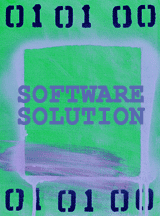Body
 In today’s fast-paced electronics industry, original equipment manufacturers (OEMs) design, manufacture and service a broad range of products that include fuel cells, pacemakers and wireless devices. In addition to the technical challenges associated with designing such diverse and complex electronic products, identifying quality issues throughout the supply chain remains a constant problem. Brand owners need to know if their product meets specification. If it doesn’t, they need to understand why as well as whether the problem was due to design, manufacturing or process issues. This product performance intelligence is paramount, as today’s OEMs must protect their brands and comply with stringent industry regulations while also meeting customer requirements.Effective product quality management is further complicated by the growing trend toward globalization. As a cost-saving measure, the design, manufacture and test of products are now all routinely done at multiple geographically dispersed sites. Manufacturing issues and product defects often aren’t identified until a product is manufactured or, worse yet, deployed in the field.
In today’s fast-paced electronics industry, original equipment manufacturers (OEMs) design, manufacture and service a broad range of products that include fuel cells, pacemakers and wireless devices. In addition to the technical challenges associated with designing such diverse and complex electronic products, identifying quality issues throughout the supply chain remains a constant problem. Brand owners need to know if their product meets specification. If it doesn’t, they need to understand why as well as whether the problem was due to design, manufacturing or process issues. This product performance intelligence is paramount, as today’s OEMs must protect their brands and comply with stringent industry regulations while also meeting customer requirements.Effective product quality management is further complicated by the growing trend toward globalization. As a cost-saving measure, the design, manufacture and test of products are now all routinely done at multiple geographically dispersed sites. Manufacturing issues and product defects often aren’t identified until a product is manufactured or, worse yet, deployed in the field.…
Want to continue?
Log in or create a FREE account.
By logging in you agree to receive communication from Quality Digest.
Privacy Policy.
Add new comment